Trending Prospects (1/6/2011) Justin Harper, Nikola Vucevic, Andrew Goudelock, Trevor Mbakwe
Trending Prospects (12/30/2010) Keith Benson, Tristan Thompson, Klay Thompson, Quincy Acy
Trending Prospects (12/23/2010) Khris Middleton, Markieff Morris, Keith Clanton, Orlando Johnson
Trending Prospects (12/16/2010) Scotty Hopson, Rick Jackson, Festus Ezeli, Brad Wanamaker
Trending Prospects (12/9/2010) Brandon Knight, Demetri McCamey, David Lighty, Justin Holiday
Trending Prospects (12/2/2010) Terrence Jones, Reggie Jackson, Charles Jenkins, Steven Gray
Darius Morris, 6-4, Sophomore, Point Guard/Shooting Guard, Michigan
15.2 points, 3.4 rebounds, 7.3 assists, 3.4 turnovers, 1.3 steals, 50% FG, 76% FT, 30%3P
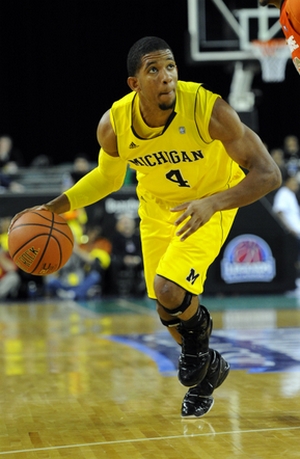
Walker Beeken
When talking about the most improved players in the country this season, Michigan's Darius Morris has to be in the conversation. The sophomore point guard has increased his numbers across the board and made the leap from an unproductive freshman to one of the top guards in the Big Ten.
From a physical standpoint, Morris has great size and length for the point guard position at 6'4 with a very impressive frame. Always looking to make things happen with the ball in his hands, Morris is capable of overpowering defenders with his solid first step and extremely aggressive mentality, similar to the way Tyreke Evans did at Memphis a few years back. While he may not possess jet-quickness by NBA standards, his size and strength are major assets on both ends of the floor and give him a huge physical advantage at the point guard position.
Running the point for a young Michigan team, Morris has really stood out with his ability to utilize his size, ball-handling ability, and craftiness to get into the paint and make plays. His ability to finish in the lane and in the midrange area is highlighted by the fact that he's shooting an excellent 56% on 2-pointers so far this season, where he's shown that he's capable of finishing in a variety ways. He's also doing a much better job drawing contact at the rim this season, as he's getting to the line at a much rate than he did as a freshman.
The area where Morris has really stood out and made strides this season has been as a distributor. Aided by the fact that he's asked to handle the ball and create shots for himself and his teammates dozens of times per game, he's shown to have a solid feel for making drive and dish plays, even if there's still plenty of room for improvement. He's clearly embraced his role as the Wolverine's primary ball-handler and playmaker, nearly doubling his assist rate from last season.
Morris is dishing out 8.8 assists per 40 minutes pace adjusted this season, which leads all players in our database. For a player who last season looked like he may not even be a point guard, that is a pretty incredible stat. With that said, we must consider the situation he's in right now, as he is asked to handle the ball virtually every second his team is on offense. This results in some very ugly possessions from time to time, where Morris will pound the ball incessantly or force the issue badly, leading to a huge amount of turnovers and low-percentage shots.
While his decision making can be very shaky at times, due to attempting to throw difficult passes or forcing up contested shots, he's adapting pretty well to his role this season, particularly as the year has moved on. Coach John Beilein has had no choice but to show the utmost confidence in Morris and his ability to run the team, altering his half-court philosophy dramatically from a stagnant motion offense to one centered around pick and rolls and isolation plays. This appears to have improved his team's offenseMichigan was just narrowly defeated by two of the top teams in the NCAA in Michigan State and Kansas this past weekand has allowed Morris to emerge as an interesting draft prospect in turn.
Morris can become even a much more dangerous player if he can continue to improve as a perimeter shooter. His 3-point shooting is up slightly to 27.9% this season, from a miserable 18% as a freshman, and his free throw shooting has risen from 63% to 77%. Clearly he put in some work shooting the ball over the summer. With that said, he still has plenty of room for improvement. He isn't particularly effective as a shooter with his feet set, and while he's more comfortable shooting off the dribble, he still takes some bad shots and doesn't have great range. If he can become a reliable shooter from 3-point range, it should really open up his slashing game and make him an even tougher matchup for opposing point guards.
Defensively, Morris has the potential to be a solid defender at the NBA level. He has ideal size and length for a point guard, he moves well laterally, and he plays with good energy. He'll need to improve on defending the ball-handler on pick-and-rolls and work harder at fighting through screens, but he can get better with that in time.
Another plus for him defensively is that he's big enough to be able to cover most shooting guards, which would enable him to be able to play in different backcourt combinations and give his coach flexibility on the defensively depending on matchups.
Overall, it's still a bit premature to jump to too many conclusions regarding Morris's NBA prospects, but through sixteen games of this season, he's certainly managed to turn some heads. His dramatic improvement from his freshman to sophomore season is very encouraging, and he is definitely a player to keep an eye on as he goes through Big Ten play.
While Morris may not be able to operate offensively in the NBA in quite the same manner as he does at Michigan currently, his size and knack for getting into the lane and making plays is definitely intriguing. As he continues to add polish and improve as a perimeter shooter and decision maker, he'll likely be a player we talk much more about in the future.
Marshon Brooks, 6-5, Senior, Shooting Guard, Providence
23.8 points, 8 rebounds, 2.2 assists, 3.4 turnovers, 1.8 steals, 1.3 blocks, 50% FG, 80% FT, 36%3P
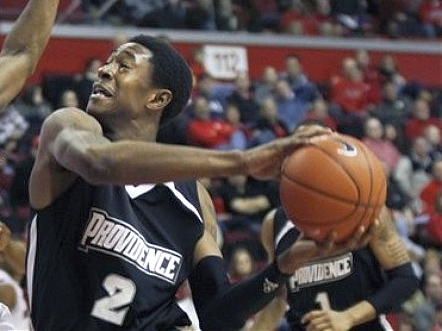
Walker Beeken
Marshon Brooks is a name that pops up in nearly every conversation when discussing the most improved players in the country this season. The Providence senior has put together an extremely productive first half of the season, proving to be one of the best scorers in the Big East.
Standing at 6'5 with a wiry frame, Brooks has a smooth, attacking game on the offensive end with the ability to score points in bunches. And while he often finds himself playing different positions for an undersized Providence team, his body and skill set suggest that he's best suited as shooting guard prospect for the NBA.
Brooks's overall improvement and efficiency can be seen in virtually all areas of his game, as evidenced by his excellent 31.2 PER, which currently ranks him among the top 20 players in the country. His biggest strength though, is his ability to create his own shot and score, as he's averaging 23.8 points per game so far this season, which puts in him in the top five in the nation.
Brooks has plenty of freedom in Providence's wide open, up tempo style (currently ranked 13th in NCAA in pace on kenpom.com), and so far, he's been extremely efficient as a scorer, showing that he's capable of getting his own shot almost whenever he wants at the college level, lighting up top five teams Syracuse and Pittsburgh for 28 and 27 points respectively.
Not quite an elite level athlete, Brooks possesses a very smooth first step, rangy strides, and an improving handle to go along nice change of speed and direction dribbles to keep defenders off balance and get into the paint off the bounce, and slice his way to the basket.
His shot selection can be terrible at timestaking far too many contested pull-up 3-pointers early in the shot-clock--but he's been better this season about focusing on getting to the rim and finishing, as evidenced by the fact that he's shooting 59% on 2-pointers and getting to the free throw line at nearly twice the rate of his junior season. He does struggle at times to finish around the rim due to his average frame and explosiveness, though.
As a shooter, Brooks has gradually improved his percentages from the field, 3-point arc, and free throw line over the course of his career, and he's turned himself into a pretty decent shooter. He has extreme confidence is his shot and at times can be a bit of a gunner, but to this point in the season he's managed to shoot a high percentage even with some of his difficult shot attempts. He's shooting a poor 27% on jumpers off the dribble though, so if he can start to be more selective in that area, he could see his efficiency numbers jump even more.
Brooks often has tunnel vision when in the process of trying to create and hasn't shown much in terms of being able to set up his teammates. His turnover rate is up this season due to his poor shot-selection and the large load he's carrying on the offensive end, and his negative assist-to-turnover ratio illustrates some of his questionable decision making skills.
A key for Brooks and his professional career will be learning to fit into a role and a system and finding ways to contribute without dominating the ball. He should also focus on becoming more proficient on catch-and-shoot opportunities as well, as he likely won't have the ball in his hands and the freedom to create like he does at Providence.
On the defensive end, Providence plays quite a bit of zone in the halfcourt and likes to get out in pressure in the fullcourt as well, so Brooks will have a big adjustment when he's faced with playing almost solely man-to-man defense. He does appear to have adequate length and lateral quickness to defend shooting guards though, and his activity level is generally pretty good too. His 8 rebounds per game for a player his size is an encouraging sign, as are his block and steal numbers (1.8 steals and 1.3 blocks per game). Giving maximum effort on every possession and becoming an asset on the defensive end will be a key for him down the road.
Although Brooks's name wasn't found on many draft boards prior to this season, he's been far too productive to ignore in 2010-2011. And while his upside may be perceived as somewhat limited since he's a senior who will turn 22 this month, his physical tools and continued improvement suggest that there is still room for growth.
He will definitely be a player to keep an eye on as Providence goes through Big East play, as big-time wing scorers who can create their own shot and shoot 50% from the field don't grow on trees. There will still be questions about how his game will translate, and if he'll be able fit in and play a role at the pro level, but if he can sustain his early season success, he will surely earn plenty of looks from NBA scouts.
Matthew Bryan-Amaning, 6-9, Senior, Forward, Washington, 15.3 points, 7.5 rebounds, 0.7 assists, 1.5 turnovers, 1.0 steals, 1.3 blocks, 57.5% FG, 59.2% FT
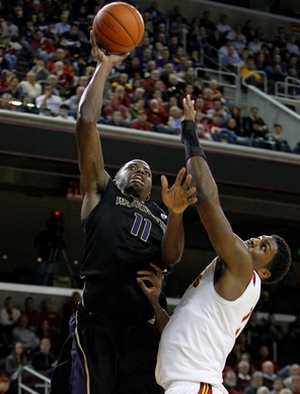
Kyle Nelson
Senior forward Matthew Bryan-Amaning came in with high expectations for the Washington Huskies out of prep school, as a super athletic but highly unpolished top-50 recruit. Four years later, and Bryan-Amaning has emerged as a consistent piece in Lorenzo Romar's offense, after making incremental improvements each and every season.
At 6'9 with a solid 240-pound frame and a reputed 7'4 wingspan, Bryan-Amaning looks the part of an NBA power forward. He is a fluid athlete as well, quick and explosive around the basket. He runs the floor awkwardly, though, and his playing style rarely utilizes his size and athletic advantages.
Bryan-Amaning plays an efficient, if not unorthodox, game on the offensive end, getting most of his points thanks to his touch around the basket and his quick feet in the post. He shows potential as a finisher in pick-and-roll sets, with his long arms and excellent explosiveness. While he is not a great screener, his touch, quickness, and leaping ability work to his advantage. He has developed a small arsenal of post offense, as well, from a running jump hook to an array of up-and-under and spin moves, but lacks anything in the way of countermoves. He is still not great at carving out space by posting up his man, but he is developing in this area and his energy level and willingness to move off of the ball have both improved.
Bryan-Amaning is not much of a shot-creator, oftentimes prefers to take off-balanced shots while falling away from the basket in lieu of going straight up into his man. His ball handling abilities limit him in this area, but his reputation for avoiding contact likely is a factor as well.
In addition, he is also a subpar shooter, far too inconsistent both in terms of mechanics and production to warrant consideration as a face-up player at this time. Furthermore, while clearly he has made strides in this area, his basketball IQ still looks average and he lacks the court vision to find his teammates from the post or avoid costly turnovers.
Ultimately, Bryan-Amaning will need to play in an up-tempo offense with a point guard who can get him the ball in a position to score.
Defensively, Bryan-Amaning brings excellent tools to the table with his size, length and athleticism. His lateral quickness is solid and he is effective when he can use his length and bulk to his advantage. Unfortunately, his focus and energy lag and he is rarely consistent enough to achieve his defensive potential. Similarly, he is a decent rebounder, but he lacks the fundamentals and drive to be more productive and to use his size and athleticism to his advantage. As elsewhere in his game, he has the potential to be a defensive factor, but his mediocre skill level and inconsistent motor do him few favors.
Despite his statistical improvement and increased role in Washington's successful offensive scheme, Bryan-Amaning remains intriguing mostly from a physical perspective. He does not play defense or score at an NBA level and, given his slow learning curve, the NBA may be a stretch for him at this point. With improved fundamentals, understanding of the game, and focus, however, he could reach the point where he could use his British passport to make money at a good level in Europe.
Delvon Johnson, 6-9, Senior, Power Forward, Arkansas
10.1 points, 8.4 rebounds, 1.2 assists, 1.5 turnovers, .9 steals, 3.8 blocks, 53.5% FG, 61% FT
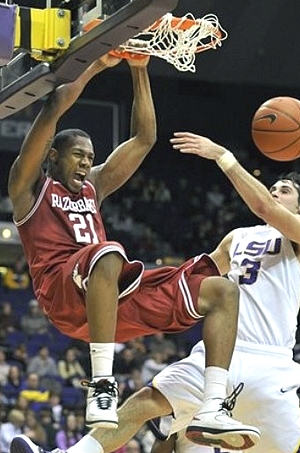
Joey Whelan
The book on Arkansass prospects for a successful season is still being written after an 11-4 start, despite a somewhat anemic offensive effort from the Razorbacks one that ranks 176th nationally in Offensive Efficiency. Perhaps then it is appropriate that the most intriguing pro prospect suiting up in Fayetteville this season is strictly known for his work on the defensive end.
Delvon Johnson is likely an unfamiliar name to most fans, even those inside the SEC. A college journeyman who began his career at Western Illinois, transferred to Indian Hills Community College (Iowa) following his freshman season, before landing at Arkansas last season as a junior. He served as a role player last season, but with a significant increase in playing time this year, Johnson has blossomed as an impact defender inside for the Razorbacks, showing flashes of ability that will likely get him plenty of looks from NBA scouts.
The best thing Johnson has going for him right now is his physical makeup. Standing 6-9 with a sturdy frame, he is blessed with a great wingspan and very nice athleticism for a player his size. He runs the floor well, shows enough quickness to defend the pick and roll and can get off his feet quickly to finish plays and block shots. He's in excellent physical condition, packing a good 230 pounds of pure muscle onto his frame and certainly shows the potential to add another 10 pounds without sacrificing any athleticism.
The important thing to understand when considering Johnson's pro prospects is he will not be asked to score, anything he drops into the basket has to be considered a bonus. With that said, the senior is a woeful performer at this end of the floor save for finishing drop off looks within five feet of the rim. He does a good job of establishing and holding his position on the block, but once he receives the entry pass Johnson often looks uncomfortable and inattentive to his surroundings. His footwork is unpolished and often rushed, while his repertoire is devoid of any reliable moves, consisting primarily of a baby hook shot to the middle of the lane that is often rushed.
Again, at the next level Johnson isn't likely to be asked to create any offense for himself, save for producing on the offensive glass, something he has excelled at this season to the tune of 4.3 rebounds per-40 minutes. As previously mentioned, he does run the open floor well in transition and is a strong finisher at the rim, so he could certainly steal a couple of baskets in this fashion as well.
Defense is where Johnson is going to make or break his pro aspirations. In his first season of seeing significant minutes at the Division 1 level he has emerged as one of the nation's elite shot blockers, ranking second in our database in blocks per-40 minutes at 4.8. The senior shows excellent anticipation and body control when challenging shots, benefitting from his length and quick leaping ability which allows him to leave his feet after the shot has already been released. This carries over to scenarios where Johnson is guarding spot up shooters, able to play off the ball an extra half step without sacrificing his ability to challenge shots. This also benefits him when opposing players opt to attack off the dribble, as his lateral quickness while good enough to allow him to defend the pick and roll, doesn't afford him the same luxury in the isolation setting.
Where the senior's defense becomes suspect is in the post. Despite having the physical strength to hold his ground, Johnson often concedes position to opposing big men, allowing them to set up very deep on the block, which puts him at a significant disadvantage even with his shot blocking prowess. This was particularly evident in the Razorbacks loss to Texas last week when Longhorn freshman Tristan Thompson routinely scored with ease on Johnson. The other noticeable trend in his interior defense is the tendency to overplay his man to one side which often leads him susceptible to entry passes over the top.
With all of that said, he has shown time and time again the ability to alter shots in and out of his immediate area when roaming the paint. He challenges almost everything around the rim and is a significant deterrent to opposing teams. He has also managed to stand out as a rebounder at this end of the floor as well, overall pulling in almost 11 rebounds per-40 minutes.
Looking to the future, Johnson is a long shot to be drafted, but he certainly has a similar makeup to several other players who have managed to land on pro rosters ala Joel Anthony or Jeremy Evans. The senior's role at the next level will consist of rebounding, defending and finishing at the rim, all things he has done at the collegiate level. Johnson will need to continue producing, particularly at the defensive end of the floor and hope that he makes enough of an impression on a team that is willing to take a chance on either in the second round or as a free agent prospect down the road.













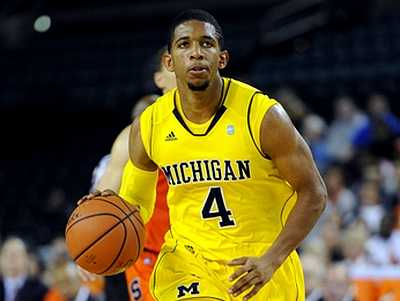










































Comments